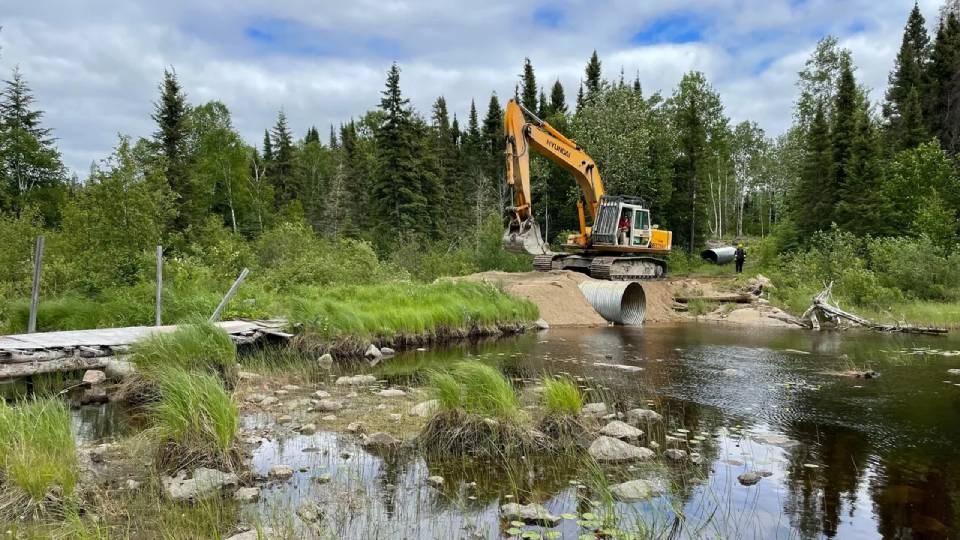Forestry in Northern Ontario is an integral part of the region’s economy, but when the recession of 2008-’09 hit, the demand for lumber and other forest products decreased significantly. Many forestry companies were forced to lay off workers or shut down operations entirely.
Fast forward 15 years and forestry is now experiencing labour force and skill shortages that are preventing the sector from realizing its full economic potential.
Bridging the Gap Between Ontario’s Youth & the Provincial Forestry Sector is a recent study that explores the current job vacancies and the education and training needed to fill the workforce gaps.
The study was a collaboration between Forests Ontario and Ontario Forest Industries Association (OFIA) with the support of the Government of Ontario.
“The forestry sector is faced with labour shortages across a variety of roles, and these are expected to increase over the next five to 10 years,” said Ian Dunn, president and CEO at OFIA.
Dunn said the study was initiated to get a better understanding of young people’s perception of a career in the forestry industry and any barriers they encounter.
“In the early days, there was a lot of manual labour, incredibly hard work where people were out in the woods with axes and saws cutting down trees,” Dunn said.
“It has changed dramatically and changed as much as can be imagined. Today we have mechanized equipment operated from air conditioned cabs.”
Similar to other employment trends, forestry is experiencing mass retirements, and finding ways to recruit and retain new employees has been challenging.
There is a wide range of jobs in the sector: logging and harvesting; processing and manufacturing; sawmilling, pulping, and paper production; transportation and trucking; and silviculture and forest management; along with skilled trades work for millwrights, electricians, and heavy equipment operators.
Dunn said the real demand is for mill positions such as stationary engineers, technicians, heavy equipment operators and truck drivers.
In fact, logging truck drivers and heavy equipment operators are critical to operations, but are also the most challenging to recruit.
“There are over 23,000 trucking vacancies and that’s projected to double in the next few years,” Dunn said. “Getting timber from the forest to the mill all depends on truck drivers.”
The study highlights that entry into the sector includes a number of barriers, such as tuition for education, transportation, or child care programs for single mothers.
Awareness and education are also key barriers to the industry, and compensation can be lacking compared to other similar work such as mining.
The forestry sector is also one of the largest Indigenous employers in the country and includes 1,400 Indigenous-owned businesses.
Jordan Hatton, director of economic development for Bingwi Neyaashi Anishinaabek, said “forestry is going gangbusters” and the community continues to integrate forestry operations into its economic development plans.
The four First Nation communities situated in the Lake Nipigon Forest — Bingwi Neyaashi Anishinaabek, Animbiigoo Zaagi’igan Anishinaabek, Biinjitiwaabik Zaagi’igan Anishinaabek and Red Rock Indian Band — oversee the Lake Nipigon Forest Management (LNFMI)/Four Nations Forestry.
The Lake Nipigon area is located in Northwestern Ontario, covering an area of approximately 4.2 million hectares, making it one of the largest forested areas in the province.
The co-operative is responsible for planning and implementing forest management activities, including harvesting, reforestation, and maintaining forest health.
Scot Rubin, general manager for Lake Nipigon Forest Management, said they hire approximately 100 employees from the local First Nation communities to work on tree planting, roadside brushing and manual thinning, and that includes several supervisors with college credentials in forestry.
“We plant 1.5 million trees per year,” Rubin said. “Right now is looking good for career opportunities,” he said about the future prospects in their operations.
They are also in the early stages of looking at a regional biomass operation, a facility that will utilize waste wood and residue from operations. Biomass energy can be used for heating, electricity generation, and transportation.
By utilizing waste wood products that would otherwise be discarded, biomass energy can reduce the need for fossil fuels and help to mitigate climate change.
Connecting with young people, immigrants and Indigenous communities is a strategy they hope pays off and keeps the industry poised for a promising future.




